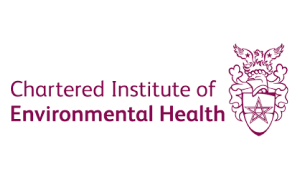What Will I Learn?
Overview
The Award in Food Safety in Manufacturing – Level 3 course is designed for individuals who work or intend to work as supervisors in the food and drink manufacturing sector. The course aims to provide learners the knowledge and understanding to take responsibility and contribute to improvements in food safety practice.
The Award in Food Safety in Manufacturing – Level 3 course will introduce learners to food safety monitoring procedures, identify hazards to food safety and take action in light of these hazards. Anyone working in a position of supervisor in the food business should be responsible and accountable for food safety and hygiene. Individuals who follow this course will gain the confidence and the opportunity to learn the best practices in food safety and apply in within their workplace environment.
The Award in Food Safety in Manufacturing – Level 3 course will cover the fundamental basics of good food hygiene practices and the necessary skills to be able to work safely with food. Individuals should understand the legal responsibilities in terms of applying best practices in manufacturing such as controlling temperatures, food preparation and storage, food safety hazards and premise cleaning. The Award in Food Safety in Manufacturing – Level 3 certification is nationally recognised by local authorities and environmental health officers across the United Kingdom.
Why Choose Global Edulink?
Global Edulink offers the most convenient path to gain recognised skills and training that will give you the opportunity to put into practice your knowledge and expertise in an IT or corporate environment. You can study at your own pace at Global Edulink and you will be provided with all the necessary material, tutorials, qualified course instructor, narrated e-learning modules and free resources which include Free CV writing pack, free career support and course demo to make your learning experience more enriching and rewarding.
Who is this Course aimed at?
- Caterers
- Food business operators
- Food establishments
- Food factories
- Meat cutting plants
- Diaries
- Breweries
Entry Requirement
- The course is suitable for supervisors and managers who work with and directly handle food processing and manufacturing
- Anyone with an interest in acquiring knowledge in food safety and food manufacturing
- Access Duration
- Method of Assessment
- Certification
- Awarding Body
- Progression and Career Path
- Other Benefits
This certificate will improve your qualifications for various job roles in the food manufacturing industry. You can also use this certificate to win the job promotion or other job incentives you have been wishing for to progress in your career. Listed below are some of the job positions this certificate will qualify you for, along with the average UK salary per annum according to https://www.payscale.com/career-path-planner,
- Food Technologist – €25,823 per annum
- Food and Beverage Manager – €25,034 per annum
- Food and beverage Supervisor – €16,729 per annum
- Food and Beverage Assistant manager – €19,598 per annum
- Food and Beverage Director – €55,000 per annum
- Caterer – €18,500 per annum
| Common Career Paths For Health Safety Advisor |
|---|
- Written and designed by the industry’s finest expert instructors with over 15 years of experience
- Repeat and rewind all your lectures and enjoy a personalised learning experience
- Gain access to quality video tutorials
- Unlimited 12 months access from anywhere, anytime
- Save time and money on travel
- Learn at your convenience and leisure
- Eligible for TOTUM discount card
- Free Career Support Service
- 25% Discount on personal Statement and covering letter writing service
- Free Access to Over 150 courses for 2 days (48 hours)
- Free access to course before you purchase (For selected courses only
Course Curriculum
| 1: Introduction | |||
| 1.1 Define the terms | |||
| 1.2 Define the role of a supervisor in controlling food safety, identify food safety hazards and understand the methods by which the controls are communicated to others in the workplace | |||
| 1.3 State the economical impact of both good and bad food safety practice on businesses, employees and customers | |||
| 1.4 Describe the trends in reported outbreaks of foodborne illness | |||
| 1.5 List the groups of people who are most at risk | |||
| 2: Legislation | |||
| 2.1 State the current food safety legislation which relates to food premises and be aware of where guidance on the law may be sought | |||
| 2.2 State the role and powers of enforcement officers in respect to food safety | |||
| 2.3 Explain the consequences of non-compliance with food safety legislation | |||
| 2.4 Explain the concept of due diligence | |||
| 2.5 State the responsibilities that employers and employees have with regard to keeping food safe | |||
| 2.6 State the role of the supervisor in the investigation of an outbreak of food-borne illness | |||
| 3: Good Hygiene Practice | |||
| 3.1 Define the terms, and give examples | |||
| 3.2 Describe the procedures used to prevent food from being contaminated on receipt, during storage, preparation, cooking, service/ and display | |||
| 3.3 State the procedures available for the detection of contaminants and corrective actions | |||
| 3.4 State the risks caused by allergens in foods and the controls measures and labelling needed | |||
| 3.5 State the effects that spoilage bacteria can have on food and those who ingest it | |||
| 3.6 State the sources, level of incidence, onset times and symptoms for common food poisoning bacteria | |||
| 3.7 State the sources, level of incidence, onset times and symptoms for common foodborne diseases | |||
| 3.8 Describe the process of binary fission and list the factors influencing bacterial reproduction | |||
| 3.9 Describe the function of bacterial spores, the risks that they pose and the controls required | |||
| 3.10 Describe the food safety hazards caused by toxins produced by some food poisoning bacteria | |||
| 3.11 Give some examples common food-borne viruses, explain the risks they cause to food safety and how these might be reduced | |||
| 4: Temperature Control | |||
| 4.1 State the temperatures required to control bacterial and enzyme activity in food | |||
| 4.2 Describe the temperature controls required for food deliveries, food storage, cooking and reheating food, hot and cold holding and the cooling of food | |||
| 4.3 Describe safe methods of checking, verifying and recording food temperatures. | |||
| 4.4 State the principles involved in preventing food deterioration | |||
| 5: Workplace and Equipment Design | |||
| 5.1 List the design features of a suitable premise for the preparation of food, including the importance of layout and food flow | |||
| 5.2 State the requirements for adequate lighting and ventilation | |||
| 5.3 Describe suitable finishes for fixtures and fittings | |||
| 5.4 Describe the properties of equipment for use in food premises | |||
| 5.5 Develop and implement effective recording and labelling systems for the receipt and storage of food | |||
| 6: Waste Disposal, Cleaning and Disinfection | |||
| 6.1 Describe suitable methods for the storage and removal of waste and state how the process can be adequately supervised | |||
| 6.2 State the need for, and benefits of, systematic cleaning and how it can be implemented and supervised | |||
| 6.3 Explain the products employed in cleaning, disinfecting, sanitising and sterilising and the methods of cleaning food equipment, food and hand contact surfaces and other surfaces in the food premise | |||
| 7: Pest Control | |||
| 7.1 List common food pests and describe the risks they pose to food safety | |||
| 7.2 Describe the different methods of control that can be used and the role of supervisory management in controlling food pests | |||
| 8: Personal Hygiene | |||
| 8.1 Explain the importance of personal hygiene and the responsibilities of food handlers and how that standards can be monitored | |||
| 8.2 Describe the supervisor’s role in monitoring and preventing contamination from food handlers who are carriers of infection and include those hazards associated with unclean hands and nails, wounds and skin infections, jewellery, unsatisfactory protective clothing, smoking and eating | |||
| 8.3 State that suspected cases of persons suffering from food-borne illnesses should be excluded from food handling duties | |||
| 9: Training | |||
| 9.1 State the importance of staff induction and on-going training and the contribution that a supervisor can make towards it | |||
| 9.2 Explain the importance of keeping staff training records | |||
| 9.3 Describe the supervisor’s and manager’s role in the effective communication of food safety procedures to employers and all employees | |||
| 10: HACCP | |||
| 10.1 Identify the hazards in a food process | |||
| 10.2 Determine critical control points | |||
| 10.3 Establish critical limit(s) | |||
| 10.4 Establish a system to monitor control of the critical control points | |||
| 10.5 Establish the corrective action to be taken when monitoring indicates that a particular critical control point is not under control | |||
| 10.6 Establish procedures for verification to confirm that the HACCP system is working effectively | |||
| 10.7 Evaluate controls and documentation concerning all procedures and records appropriate to these principles and their application | |||
| 10.8 Explain the supervisor’s contribution towards both internal and external inspections and food safety audits | |||




















Dottie Wilson
I’m a caterer myself and that makes me conscious of the safety and hygiene of food that is distributed to our clients. I wanted to qualify in this course and learn about food safety in an in-depth manner. I’m pleased to say I found the perfect course to suit my level of abilities.
Ernest Macdonald
The course was easy to follow, and the information was presented well through a series of training videos. The course was more interesting than I expected it to be. I have learned quite a bit, and plan to apply my knowledge in the workplace.
Daphne Jackson
The course is explained very well. And the navigation of the course is quick and easy.
Ernest Jones
I’m a supervisor in a restaurant, and I must say that this is one of the most comprehensive courses I have studied. Everything is so practical and hands-on. I had a great learning experience.
Kristoffer Polaha
This is a great course to learn about food safety practice. You will get a practical training in it.
Landon
I was looking for a way to further improve my knowledge on food safety, and this course has greatly helped me in my pursuit and will surely recommend it to my colleagues.
Aleksey Devon
The course I’ve just completed has been an amazing journey. The information and knowledge I acquired has been invaluable and I will take it with me as I look forward to new challenges.